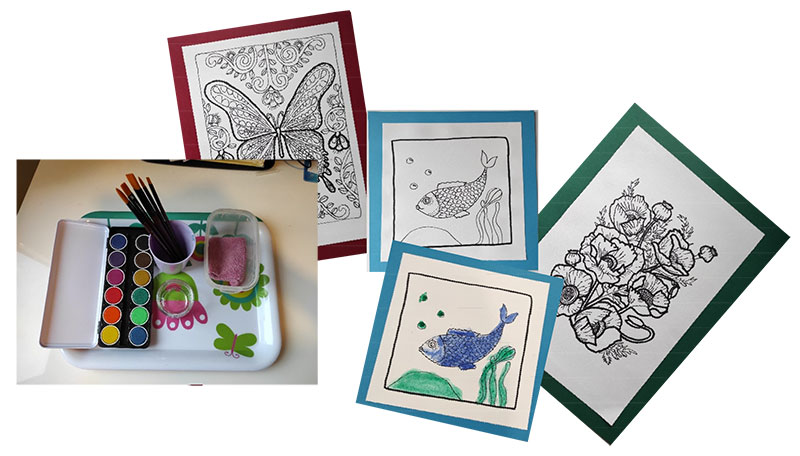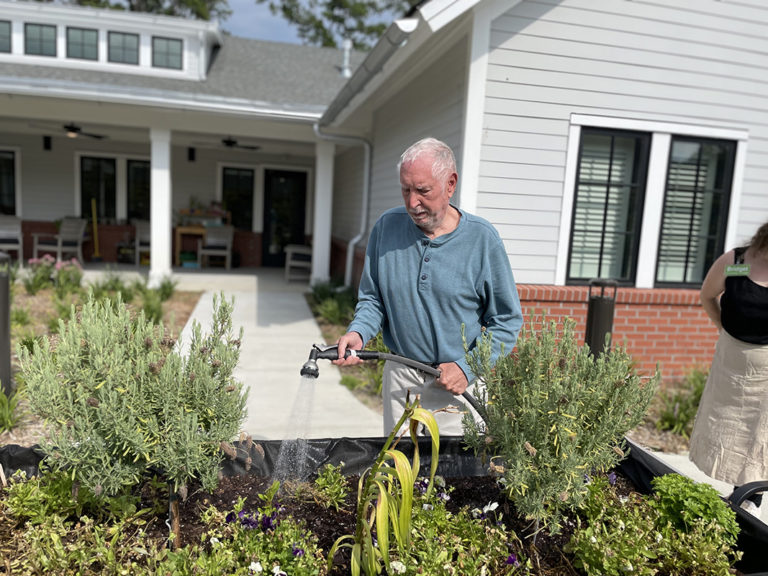Joy in Slovenia – Polona Campolunghi Pegan
I work as a family physician, and for the past few years, I have been providing healthcare in two nursing homes. In addition to the most common physical symptoms, residents frequently express feelings of sadness, loneliness, and a sense of purposelessness. I often hear statements from the elderly who have moved into the nursing homes, such as: “I wish to die because I see no meaning in my life,” or “I can't do anything anymore; I'm just a burden, tired of everything.” People often express the pain of losing their own homes, families, autonomy, and the freedom to make decisions, and above all, there is a prevalent bitter thought of how they used to do so much for themselves and others in the past, whereas now they can only sit and wait. It becomes even more challenging for individuals who, due to dementia, are no longer able to express their feelings, needs, and desires.
Reactive behaviors frequently appear in residents, such as wandering, aggression, resistance to care, bathing, or dressing. The typical response to such behaviors is a request from staff to introduce or increase the dosage of psychiatric medication, with the aim of providing proper care and preventing agitation or danger to the individual or other residents. However, prescribing such medication is often associated with significant adverse effects, such as excessive sedation, slowed cognition, decreased communication abilities, reduced mobility, and an increased risk of falls. While observing individuals with dementia, I often wondered about the possibility of a different, more person-centered approach. Therefore, the presentation of the Montessori method for individuals with dementia quickly caught my attention. At the beginning of my Montessori work I entered the unknown territory of observing a person from a different perspective to the one I was used. In my medical work, my primary observations are what is not functional in a person, their symptoms, signs of illness, difficulties and limitations. However, in Montessori observation, the focus is on finding the abilities and activities that the person I work with can still do and enjoy.
One of my study cases was Mrs. T. She is 84 years old. She recently came to our care community and was struggling to adjust to the environment. For me, the main challenge in working with her was her sadness. She cried a lot, was angry with her relatives, was passive, and refused to participate in group activities and events. She spent most of the day lying down or sitting in her room. I initially spent a lot of time talking about her feelings, emotions, and life story. I also conducted a reading screening and found that her reading ability and comprehension were still preserved. Knowing these things, I introduced her to three-part cards with garden flowers. She had no major difficulties in recognizing the flowers and reading the labels, and she quickly grasped the principle of matching the labels to the control cards. Although she completed the activity, I didn't feel that she enjoyed it.
Next time I saw her, I asked her if she could help me arrange bouquets of flowers. She declined the activity, but I persisted and encouraged her. At first, she just sat passively next to me, but then she joined me and slowly started visibly enjoying the task. Personally, it was a powerful experience for me to see the joy and satisfaction awaken in her. She arranged three bouquets, which we placed on all the tables in the common area of the facility, and the task allowed her to interact with other residents who joined us. I suggested that she could arrange bouquets for the common area every week, and she agreed to it. We defined this as her role.

She then expressed her desire for further activities. I introduced her to coloring with watercolors using pre-prepared coloring pages. At first, she was uncertain and said she had never colored in her life. After the initial introduction, however, she approached the task with great concentration and calmly colored two pages. After completing the activity, she expressed satisfaction and requested that we hang the colored pictures in her room. This activity turned out to be very fulfilling for her.

We tried three-part cards again with different motifs; she found them very interesting. She was particularly drawn to the photographs of places she had already visited, which held important memories for her. She first looked at the pictures and commented on them. Upon seeing the first one, she said, “Oh! Sveta Gora. I've been there before.” Then she picked up the next one and said, “Look! Piran. That's by the sea.” She was delighted when she saw the picture of the next town. She immediately shared that she had been there with her husband and got married there. After examining all the pictures, she began matching the photographs and words. While exploring these cards, she would share stories about her life.
Her interest grew and she became interested in small objects related to the theme of the sea. She carefully looked at every object. While she couldn't recall the word “boat” immediately, she knew what object it referred to and its purpose. She came across a similar word, “ship,” but quickly corrected herself, saying, “No, it's not a ship. Ship is larger. It's called something else.” When I told her the correct word, she repeated it and nodded in agreement. When she picked up the miniature figurine of a woman in a swimsuit, she laughed and said, “This one is as chubby as I am.” I saw her laughing in a relaxed manner for the first time. We really had good time together. I arranged the figurines on the left side of the surface and offered her cards with labels. She read them aloud slowly and then independently placed them next to the corresponding objects. She didn't require any assistance in this process.

Household and practical activities such as folding towels, arranging flowers, and squeezing lemons were familiar to her, and she could easily perform them independently. I was delighted to see a significant improvement in initial passivity and resistance during my visits. It was evident that she was happy to see me, and each time she expressed a desire for me to come back and show her new activities. She genuinely rejoiced in her accomplishments. While working with materials, she also communicated with other residents, and she even helped another lady who had difficulty with the task. She complained less about missing her home, which indicated that she was gradually accepting her new environment.
I greatly enjoy working with the Montessori philosophies. It's when I see a spark of life in the eyes of an elderly person who had previously shown no interest. It's when we share a laugh while observing miniatures together. It's when an older lady, who is unable to communicate meaningfully due to dysphasia and is completely disoriented, gently takes miniature animal figurines in her hands, caresses them, and then caresses me because I showed them to her. It's when a gentleman, who aimlessly wanders around the facility all day, stops and points to the flowers I brought for making bouquets, saying, “This is beautiful.” These were the moments that deeply touched and genuinely moved me.
I am grateful to all of you who represent and promote the Montessori approach for the elderly and individuals with dementia, and who share your knowledge and experiences with us. Every idea that spreads awareness of the value of each individual and leads to the improvement of the quality of life for the most vulnerable contributes to a better world for everyone.






